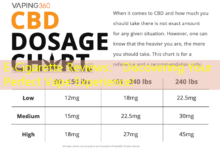
Understanding Testing in the E-Cigarette Industry
The vaping industry has surged in popularity, with millions of users worldwide choosing e-cigarettes over traditional tobacco products. However, with this rapid growth comes the need for robust testing procedures to ensure product safety and quality. This article aims to delve into the comprehensive testing processes that e-cigarette products undergo before they reach consumers.
The Importance of Quality Testing
Quality testing is vital in the e-cigarette market due to potential health risks associated with improper ingredient mixtures and product failure. _Quality control procedures_ help ensure that products are free from harmful substances and perform as expected. Industry standards dictate that every e-cigarette brand should conduct extensive testing, including physical, chemical, and microbiological evaluations.
Types of Tests Conducted on E-Cigarettes
1. Chemical Analysis: This form of testing focuses on the ingredients in e-liquids. Various methods, like Gas Chromatography-Mass Spectrometry (GC-MS), help identify dangerous compounds that may be present. For example, some cheaper brands might inadvertently contain harmful levels of diacetyl, which can lead to severe lung diseases.
2. Nicotine Verification: It’s crucial to verify that the nicotine levels in e-liquids correspond to what is stated on the packaging. Inaccurate labeling can mislead consumers and may even result in severe health consequences. Testing ensures that users receive the correct dosage as intended.
3. Device Reliability Tests: Beyond the e-liquids, the devices themselves must be subjected to rigorous testing. This includes battery safety assessments, overheating tests, and leakage evaluations to prevent malfunction. A well-known case involved a faulty e-cigarette battery that caused a user injury, highlighting the necessity of these tests.
Regulatory Standards for E-Cigarettes
Regulatory agencies, such as the FDA in the United States and the TPD in Europe, have established specific guidelines regarding e-cigarette testing. Manufacturers must submit their products to these agencies for approval, providing evidence of safety and efficacy through comprehensive testing data. Following these regulations not only enhances consumer trust but also ensures the manufacturer’s legal compliance.
Chemical Testing and its Impact on Consumer Safety
When it comes to e-cigarettes, not all components are created equal. For example, some brands might use flavoring agents that, while they taste good, could pose health risks. Testing these substances is paramount; in 2021, a study revealed that certain flavors could lead to increased respiratory issues. The findings prompted stricter regulations and increased awareness among consumers.
Testing in Product Development Cycle
The testing process is not just an afterthought; instead, it should be integrated throughout the product development cycle. From ingredient sourcing to final product formulation, continuous quality assurance fosters innovation while ensuring safety. Many reputable companies utilize _a tiered approach_, conducting preliminary tests during the ingredient selection phase and more comprehensive evaluations once the product is developed.
Case Studies of Effective Testing Practices
Brands like Juul and Vaporesso have implemented rigorous testing protocols that set industry standards. For instance, Juul’s adherence to stringent quality checks showcased a commitment to user safety, resulting in a loyal customer base. Vaporesso takes it a step further by participarily advocating for transparent testing practices, sharing results publicly to build consumer confidence.
The Future of Testing in the E-Cigarette Sector
As the vaping industry evolves, so too will the testing requirements. Emerging technologies, such as machine learning and real-time analytics, might revolutionize how products are tested. These innovations promise not only to enhance efficiency but also to improve the accuracy of testing results, paving the way for safer vaping experiences. Emphasizing continuous improvement in testing will prove essential in maintaining consumer trust and ensuring industry sustainability.
“`







